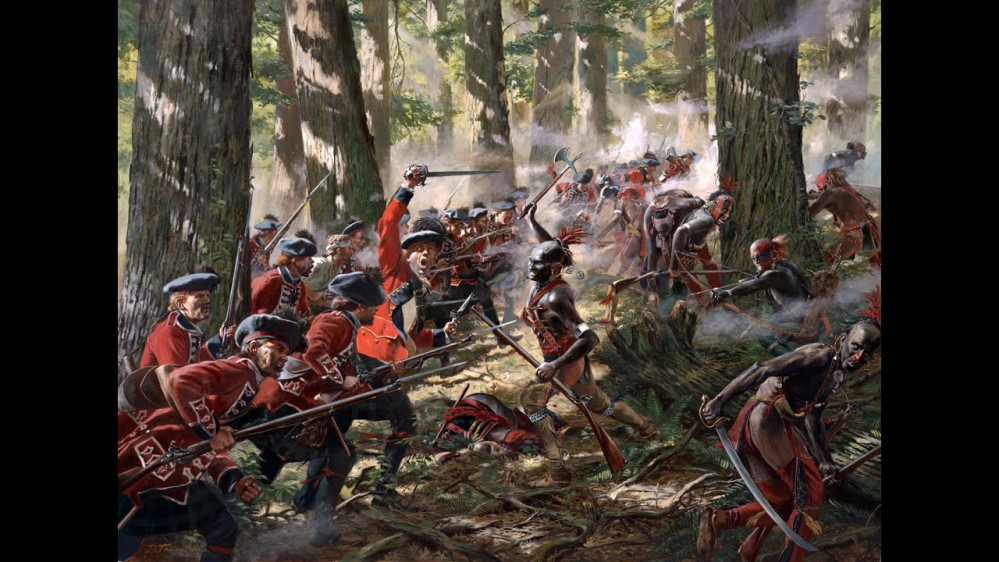
A Gentleman's (or Woman's) Guide to Recreating the Engagements that Took Place in North America During the French and Indian War with Special Attention Given to those Small Skirmishes Well Suited for 28mm Tabletops
The Scenarios
Welcome back to the article series exploring the new edition of Muskets and Tomahawks. In this article we’ll look at scenarios, objectives and Random Events/Side Plots.
There are three universal scenarios in the main rulebook that can be used for any time period, all of them are classic, basic games that we’re all used to, Seizing objectives, steal the loot and exit the board.
What really adds flavour to the game is the expansion books which contain tailored scenarios for that period. The only supplement published so far is Redcoats and Tomahawks but future releases will follow the same style.
Examples of the specialised scenarios in the expansion are Massacre, a scenario about a raiding force killing civilians. Raid, a scenario about destroying buildings. Capture, a scenario about capturing buildings. Exploration, a scenario about tagging the table edge and retreating. Battle, the basic kill points scenario.
In the same style as the last edition both players don’t play the same game. Depending on what type of force you have you roll a number of dice which determines what type of mission you’re more likely to play. For example a force of Indians rolls four d10’s and picks the highest while a force of Militia rolls three d10’s and picks the lowest. As you might be able to deduce higher rolls are more likely to be attacking scenarios and lower rolls are more likely to be defending scenarios.
A common example might be a force of Indians and Canadians coming into the Virginia backwoods to destroy a settlement while the local Provincials are more concerned with evacuating the locals than saving their homes. Another example could be the same group of Indians and Canadians merely trying to scout the area meanwhile the Provincials have to keep the settlement protected and not allow it to be burned down.
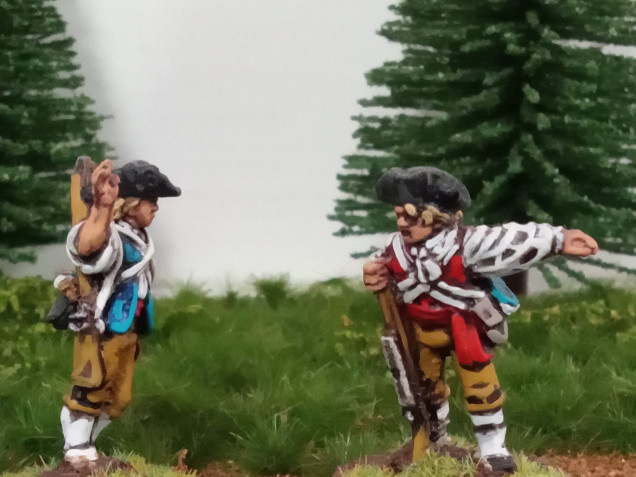 "Right so we just burned down the village sir" "What! We were supposed to save the village" "Sorry Sir we must have got our missions mixed up"
"Right so we just burned down the village sir" "What! We were supposed to save the village" "Sorry Sir we must have got our missions mixed up"I really like this method of playing games, so many times we assume that both sides are after the same goal, the loot or kills or reconnaissance. In reality your troops have wildly different priorities depending on whether the Marquis de Montcalm has sent an elite force of Irregulars to scout an area or Major Washington has sent some hungry Virginian Provincials to guard the frontier against the constant raids by Canadians and their Indian allies. If these two forces met the French Irregulars could care less about burning a few log cabins meanwhile why would these Virginians getting paid less that dock labourers want to risk their lives opposing the French when they can sit tight and keep them from doing any actual damage?
It might not be as balanced as some people would like but I really wish other games would include this amazing way of playing basic pick up games. As you can imagine it would be easy enough to run a basic series of linked games, first they scout the village then they come to burn it down then beat a hasty retreat back home the only question is what will your opponents missions be?
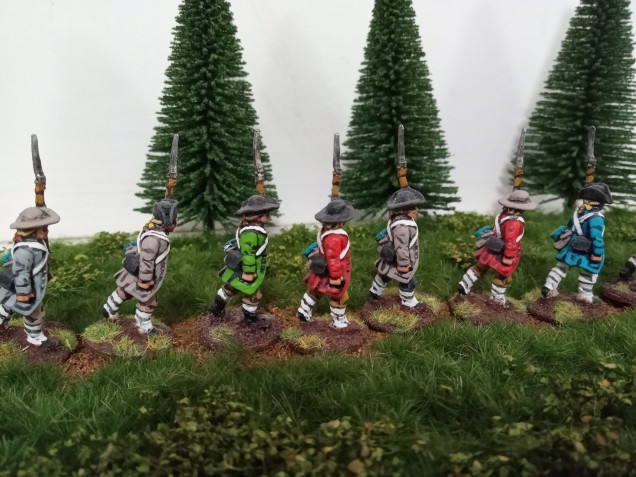 The beauty of civilians in military service is that these minis from Perry Miniatures can be anything from Militia in North America to Vendee Rebels with no changes necessary, the Civilians tend to not change the Pattern of Shoe or Jacket as often as the Military does.
The beauty of civilians in military service is that these minis from Perry Miniatures can be anything from Militia in North America to Vendee Rebels with no changes necessary, the Civilians tend to not change the Pattern of Shoe or Jacket as often as the Military does.Speaking of missions my absolute favourite thing about Muskets and Tomahawks (and if you’ve read my comments on OTT I do mention this a lot) are the Side Plots. Every game should have side plots, 40K, AoS, Flames of War, Bolt Action, Monopoly all of them need some good side plots.
While most other games include the obligatory “don’t be a jerk” passage somewhere in them Muskets and Tomahawks has a tongue in cheek unofficial rule about teasing people who don’t choose a side plot encouraging other players to get them to serve the drinks and snacks to the ‘proper gentlemen’.
Essentially Side Plots are just that, side missions mostly undertaken by the force commander which do things like help break ties, mitigate losses or make victories that much more satisfying. It gets even better though because if you choose to roll for a side plot then you randomly get one of ten Gifts which are once a game special actions that make your Commander that much more superior to those lesser men who choose to play games without Side Plots.
Side Plots are included in the main rule book, rather than rolling two d6 as in the last edition now you roll a d10 which determines your table and another d10 that determines your actual side plot.
Some examples include; your officer being drunk, not wanting to get a new uniform dirty, having a brilliant Commander who has to die, not being the first to initiate hostilities, not having any units rout, battlefield negotiations, your Commander being an old man, passing a letter to an enemy officer in the middle of a battle, being friends with the enemy leader and not wanting him killed, despising the enemy leader and wanting him killed and one of my favourites ‘A Good Day to Die’ which involves your Commander getting killed in melee combat.
As you can see a simple side plot can change an entire game. Suddenly your raid to murder civilians is hamstrung by orders not to initiate the combat or having the enemy Commander in your sights and not taking the shot for the sake of an old friend, something I doubt many people would do in any normal game.
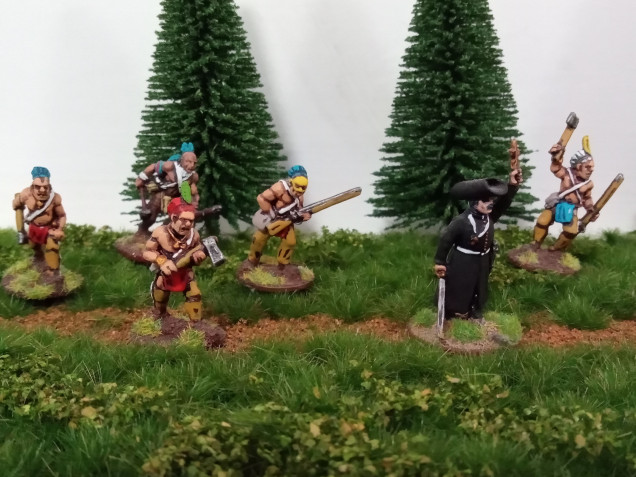 If you want variety then the French Indian War has it. I doubt Father's superiours would appreciate his actions very much! Indians ran the spectrum from Cannibals to Catholics, The Militaries of the world employed Light Troops like the Rogers Rangers along with elite troops like Grenadiers and Highlanders.
If you want variety then the French Indian War has it. I doubt Father's superiours would appreciate his actions very much! Indians ran the spectrum from Cannibals to Catholics, The Militaries of the world employed Light Troops like the Rogers Rangers along with elite troops like Grenadiers and Highlanders.This is what makes me love this game, even the casual ‘pick up’ game has so much story built into it. You really feel like you’re in the boots of a Provincial Officer struggling to keep his men fighting long enough for the civilians to get away or a French Canadian sent to scout out the enemies positions while dodging British Regulars and trying to get the local Chief to join your side in the middle of a skirmish.
Lastly we’ll take a look at the Random Events. Random events are now less common relying on one of three clock cards to be dealt before the other two or else they have no effect but we won’t worry about that all you need to know is that they’re rare but they happen. Specifically tailored random events can be found in the Supplement Books. Effects can range from the weather changing, a new officer coming forward, units testing moral, units getting buffs and my personal favourite the ornery old farmer who takes pot shots at whoever comes near his house.
Thanks for reading the second article on the 2nd Edition of Muskets and Tomahawks hopefully you’ll now have a better of how scenarios are played and how the game adds narrative elements without needing to spend half an hour writing up a backstory.









































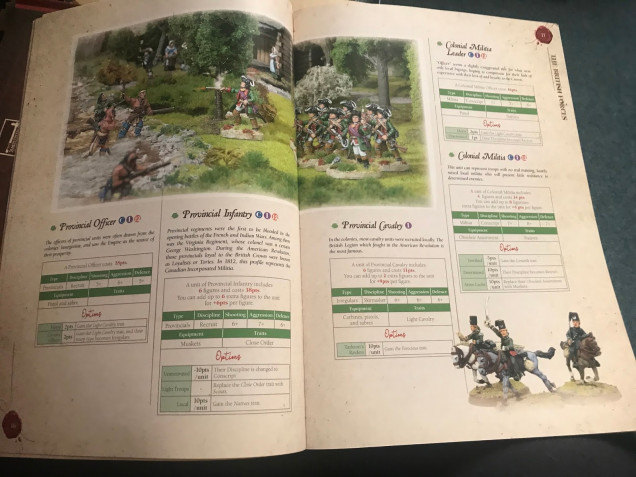

































Leave a Reply